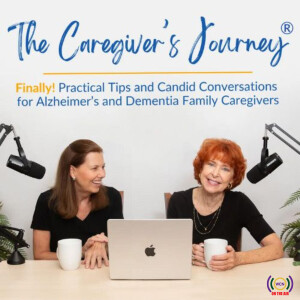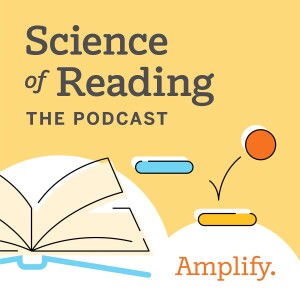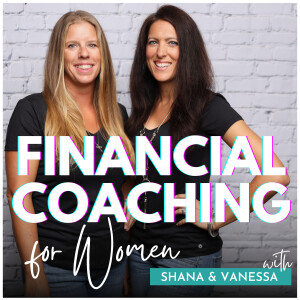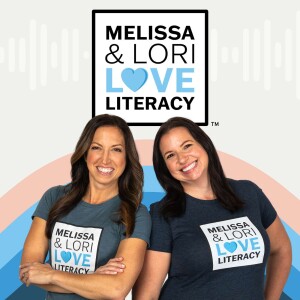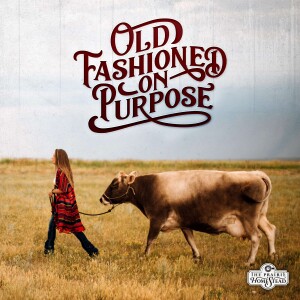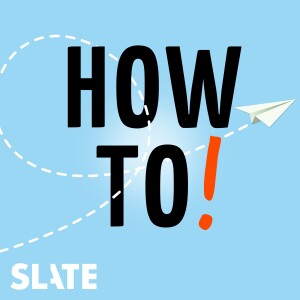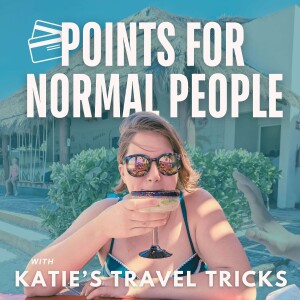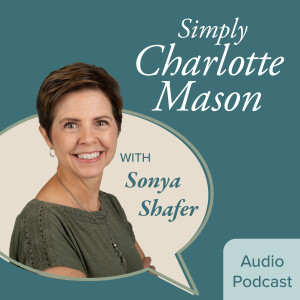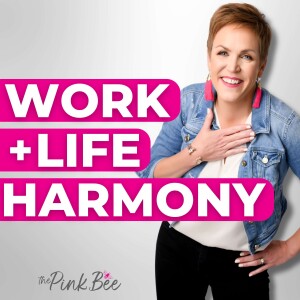

The Spark Creativity Teacher Podcast | ELA
https://sparkcreativity.libsyn.com/rssEpisode List

389: A First Week Project Lesson: Building Research Skills + Community
Today's request for "Plan My Lesson" is from a teacher searching for a first week project that helps students get to know each other AND introduces a few key skills along the way. Perhaps you can relate? Here's what she writes: "It’s time to switch up the first project I do in English 10… For the last few years I’ve had the kiddos research their first name, practicing basic research skills, as well as us getting to know them and them doing some self exploration. I want a similar caliber project, but on a different topic." So our goal for the lesson is to introduce key elements for a project that will give students a chance to share something important to them as you build community, learn and practice basic research skills, and get them adjusted to a key platform (in my opinion) for the school year, Canva. As usual, it's a struggle for me to pack it all into one lesson, so feel free to spread this over several depending on how much time you have in your period! Take the Free Canva Confidence Mini-Course: https://sparkcreativity.kartra.com/page/getCanvaconfidence Go Further: Explore alllll the Episodes of The Spark Creativity Teacher Podcast. Launch your choice reading program with all my favorite tools and recs, and grab the free toolkit. Join our community, Creative High School English, on Facebook. Come hang out on Instagram. Enjoying the podcast? Please consider sharing it with a friend, snagging a screenshot to share on the ‘gram, or tapping those ⭐⭐⭐⭐⭐ to help others discover the show. Thank you!

388: A Low-Stress (Dare I say Fun?) Lesson Plan for Day One
If there's one thing I want for your first day of school, it's for the pressure to be off you. You've got enough to worry about without needing to pull off a 45 minute lecture that magically holds students' attention before they even know you five times in a row. That's why for this lesson, requested for our summer "Plan my Lesson" series, our goal will be to hit all the day-one must-dos while also building community and keeping things engaging and low-stress. This is your chance to start connecting with your students and helping them feel comfortable in your classroom, while at the same time showing them what your class is going to be like. Grab the Syllabus Templates: https://nowsparkcreativity.com/free-syllabus-templates Go Further: Explore alllll the Episodes of The Spark Creativity Teacher Podcast. Snag three free weeks of community-building attendance question slides Join our community, Creative High School English, on Facebook. Come hang out on Instagram. Enjoying the podcast? Please consider sharing it with a friend, snagging a screenshot to share on the ‘gram, or tapping those ⭐⭐⭐⭐⭐ to help others discover the show. Thank you!

387: A Summer Reading Lesson with Clear Creative Purpose
A summer reading lesson is a nice chance to start off the year with a creative tone, while creating some of the norms you want to establish. For today's "Plan my Lesson" series episode, I'm answering requests from two different teachers in search of a back-to-school lesson on summer reading. One teacher's class will have read Scythe, another's The Hunger Games. Both are interested in reviewing the basics of literature as a springboard into the year. So how can we capture students' interest, review some key basics, like symbol, theme, and the hero's journey, give students a chance to show their understanding of the text, and establish a positive, creative tone for the year in a class period? Let's give it a shot together. One of my teacher requesters today is teaching on a block schedule, so we're going to go ahead and plan a longer period. If you're NOT teaching on a block schedule, feel free to split this plan over two class periods. Go Further: Explore alllll the Episodes of The Spark Creativity Teacher Podcast. Launch your choice reading program with all my favorite tools and recs, and grab the free toolkit. Join our community, Creative High School English, on Facebook. Come hang out on Instagram. Enjoying the podcast? Please consider sharing it with a friend, snagging a screenshot to share on the ‘gram, or tapping those ⭐⭐⭐⭐⭐ to help others discover the show. Thank you!

386: An Essay-less Argument Lesson Tapping Humor & Visuals
Students need to be able to make a great argument to find success at school, and in many professions. They need to come up with an idea, find evidence, analyze their evidence, and tie it all together with a well-written bow. Thus, for many decades, students have written essays. We've taught them to write thesis statements, organizing sentences, transitions, topic sentences, and conclusions. We've taught them how to punctuate their quotations and how to analyze them. We've typed up fixes for common errors, guided peer editing workshops, created revision stations, and so much more to help them write better essays. Then they go home. And so often they just don't see the relevance of their essays to their lives. They see argument all around them - in the children's books they read their little siblings, the political ads on Youtube, Instagram carousels on big issues, polarized podcasts playing in the background of their lives, infographics hither and yon, Tik-Tok videos trying to convince them to dump their gummy bears in Sprite and stick it in the freezer, and in a million other places. So what if, mixed in with our essays, we pushed students to NOTICE how argument surrounds them. To learn from new ways ideas are shared and supported, outside the traditional essay sphere. Today’s request for this summer's “Plan My Lesson” series comes from a teacher looking for ways to practice argument that don't revolve around an essay. This is a fun one for me, because I've designed SO many projects like this. But it's also challenging, because I've designed so many projects around this! I'd like to give you about 50 ways to practice argument without an essay, and I probably could. We could get into designing literary food trucks and arguing for each detail as a reflection of the book, hexagonal thinking for argument, designing infographics, recording podcasts, holding mock trials, creating visual research carousels to argue for an issue, real-world quick prompts with real-world audiences, argument one-pagers... honestly, there are so many ways to go. But we've covered a lot of this on the pod already, and we have just ONE class period to plan here. So instead of diving back into one of these topics, let's explore a new one - using children's books to search out fresh craft moves when it comes to argument. Today we'll explore one lesson in which students see how an author can combine visuals, humor, argument, and counterargument to make a clear, persuasive case on an issue. Sure, to children. But the same rules could apply for any argument! After exploring some fabulous mentor texts, students will try it out for themselves, focusing on the hesitations of their audience (or in other words, counterargument). Go Further: Explore alllll the Episodes of The Spark Creativity Teacher Podcast. Snag three free weeks of community-building attendance question slides Join our community, Creative High School English, on Facebook. Come hang out on Instagram. Enjoying the podcast? Please consider sharing it with a friend, snagging a screenshot to share on the ‘gram, or tapping those ⭐⭐⭐⭐⭐ to help others discover the show. Thank you!

385: Re-engaging Rusty Readers: A Stamina Building Lesson
There's a lot of conversation happening lately around student reading stamina. Rose Horowitch's Atlantic article, "The Elite College Students who Can't Read Books," helped stir the pot. I'm sure you've seen evidence of the same issues she brings up - that students are struggling to stay focused through books, and often come to you having read a lot of excerpts and short pieces rather than full novels. Test-prep, phone culture, COVID - there are all kinds of reasons, but the bottom line for you as a teacher is, what can you do about it? Today's request for our new "Plan My Lesson" series comes from a teacher looking for ways to help her students build their reading stamina. She's wondering how she can help her students work toward longer reads and more of 'em. Perhaps you're wondering the same? This is a big question, and we're just planning one lesson. But let's zoom in on a snapshot of a class that could help students move toward longer, more-engaged reading sessions. We'll start, like The Odyssey, in medias res. Related Links: Episode 196: How Caitlin's Verse Novel Book Clubs Engaged Seniors 'Til the End: https://nowsparkcreativity.com/2023/06/how-caitlins-verse-novel-book-clubs-engaged-seniors-til-the-end.html How to Host a Book Tasting: https://nowsparkcreativity.com/2019/03/how-to-host-book-tasting-free-resource.html Episode 204: Students Need Diverse Texts and Choice, with Dr. Claudia Rodriguez-Mojica and Dr. Allison Briceño: https://nowsparkcreativity.com/2023/07/students-need-diverse-texts-and-choice-heres-help.html The Dos and Don'ts of Donors Choose: https://nowsparkcreativity.com/2019/01/the-dos-and-donts-of-donors-choose-for.html Go Further: Explore alllll the Episodes of The Spark Creativity Teacher Podcast. Launch your choice reading program with all my favorite tools and recs, and grab the free toolkit. Join our community, Creative High School English, on Facebook. Come hang out on Instagram. Enjoying the podcast? Please consider sharing it with a friend, snagging a screenshot to share on the ‘gram, or tapping those ⭐⭐⭐⭐⭐ to help others discover the show. Thank you!
You may also like
Create Your Podcast In Minutes
- Full-featured podcast site
- Unlimited storage and bandwidth
- Comprehensive podcast stats
- Distribute to Apple Podcasts, Spotify, and more
- Make money with your podcast
